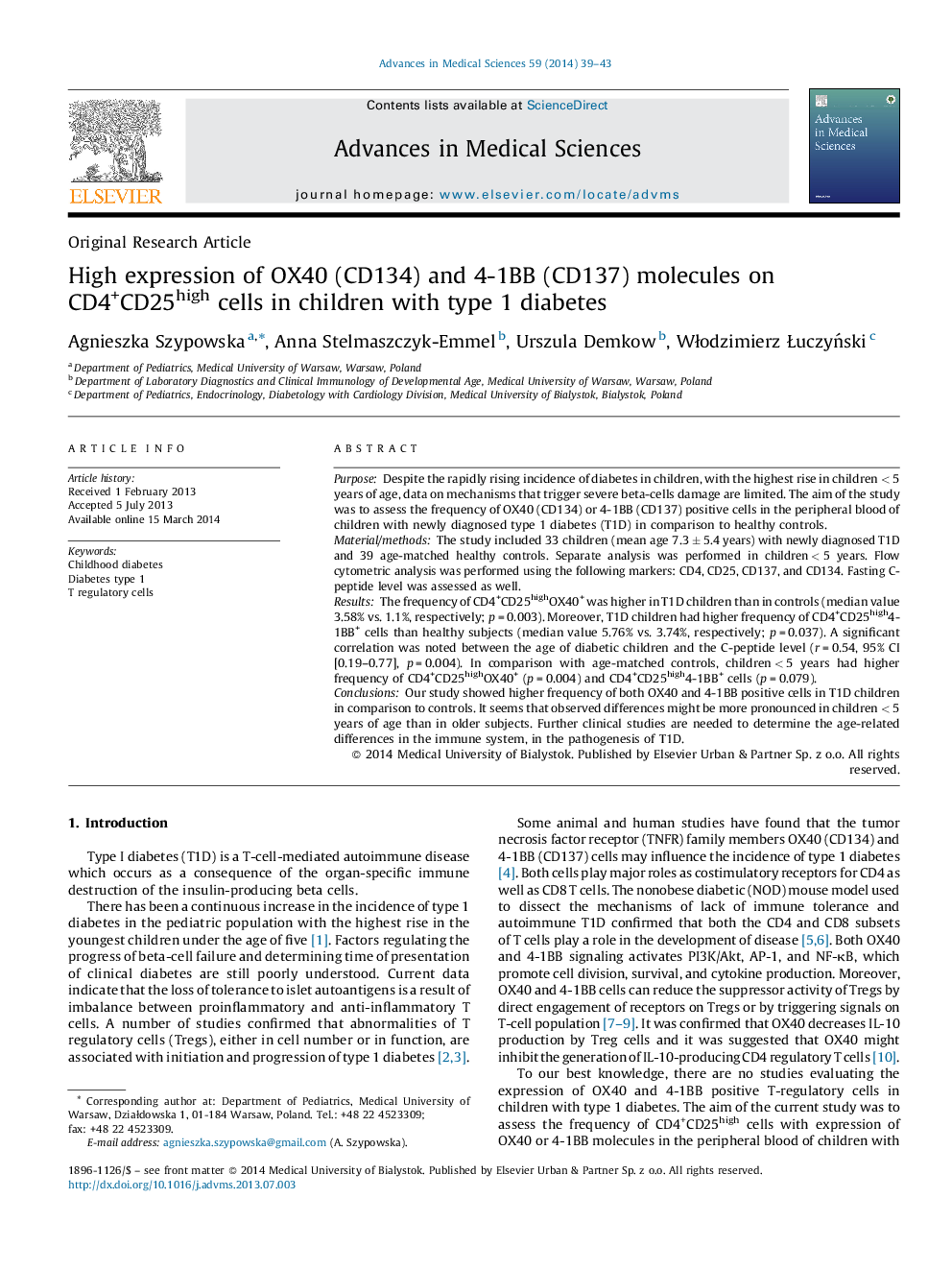| Article ID | Journal | Published Year | Pages | File Type |
|---|---|---|---|---|
| 2032029 | Advances in Medical Sciences | 2014 | 5 Pages |
PurposeDespite the rapidly rising incidence of diabetes in children, with the highest rise in children < 5 years of age, data on mechanisms that trigger severe beta-cells damage are limited. The aim of the study was to assess the frequency of OX40 (CD134) or 4-1BB (CD137) positive cells in the peripheral blood of children with newly diagnosed type 1 diabetes (T1D) in comparison to healthy controls.Material/methodsThe study included 33 children (mean age 7.3 ± 5.4 years) with newly diagnosed T1D and 39 age-matched healthy controls. Separate analysis was performed in children < 5 years. Flow cytometric analysis was performed using the following markers: CD4, CD25, CD137, and CD134. Fasting C-peptide level was assessed as well.ResultsThe frequency of CD4+CD25highOX40+ was higher in T1D children than in controls (median value 3.58% vs. 1.1%, respectively; p = 0.003). Moreover, T1D children had higher frequency of CD4+CD25high4-1BB+ cells than healthy subjects (median value 5.76% vs. 3.74%, respectively; p = 0.037). A significant correlation was noted between the age of diabetic children and the C-peptide level (r = 0.54, 95% CI [0.19–0.77], p = 0.004). In comparison with age-matched controls, children < 5 years had higher frequency of CD4+CD25highOX40+ (p = 0.004) and CD4+CD25high4-1BB+ cells (p = 0.079).ConclusionsOur study showed higher frequency of both OX40 and 4-1BB positive cells in T1D children in comparison to controls. It seems that observed differences might be more pronounced in children < 5 years of age than in older subjects. Further clinical studies are needed to determine the age-related differences in the immune system, in the pathogenesis of T1D.
